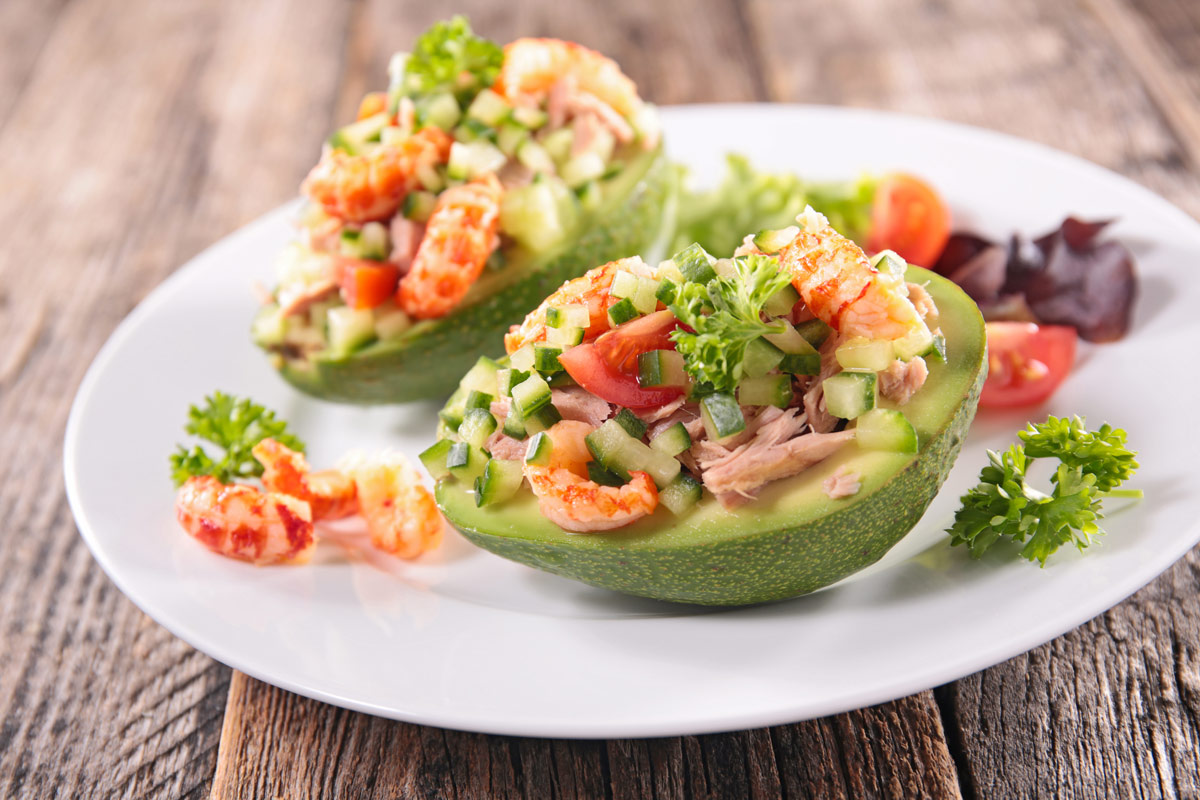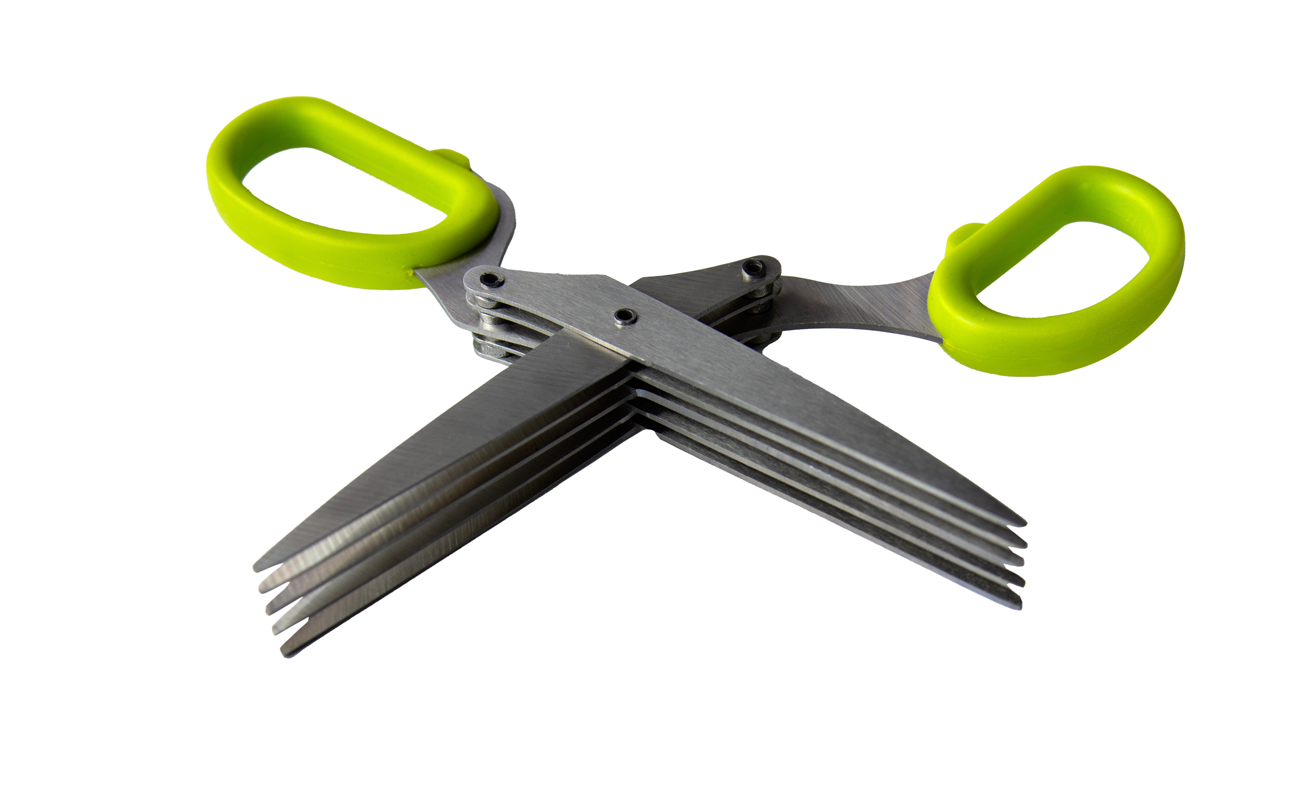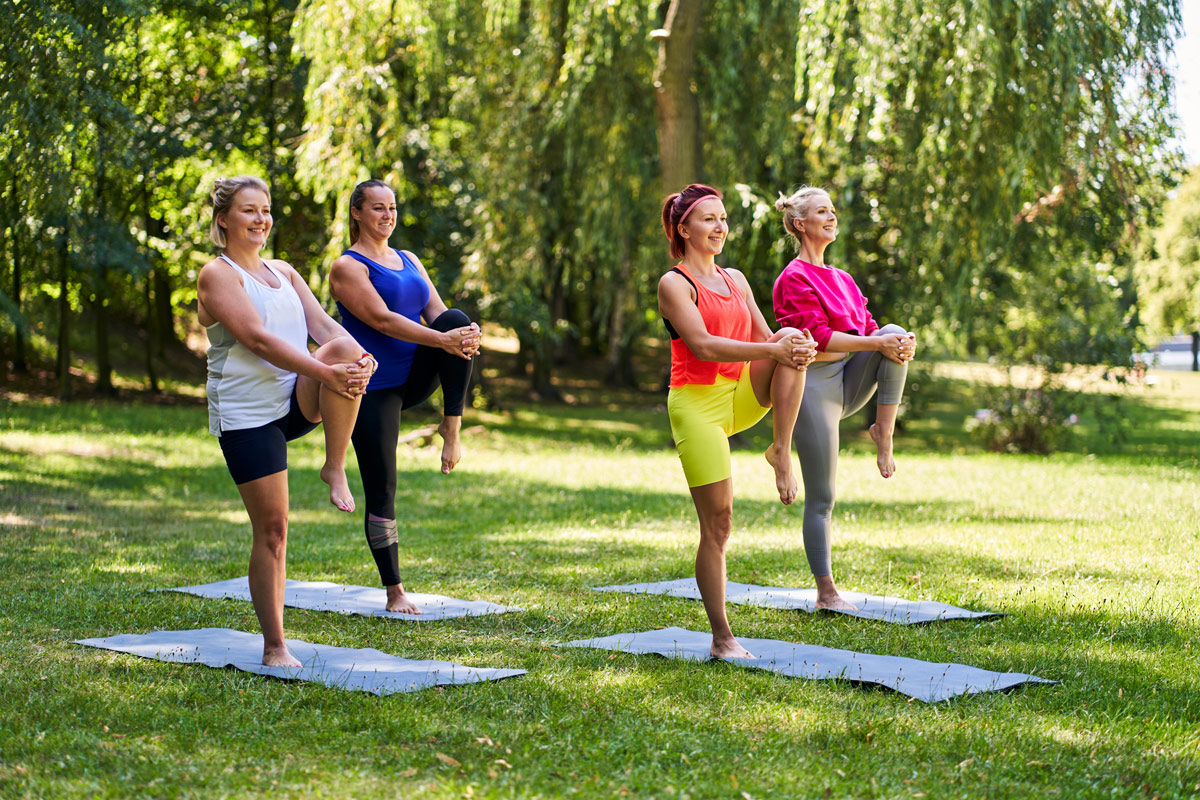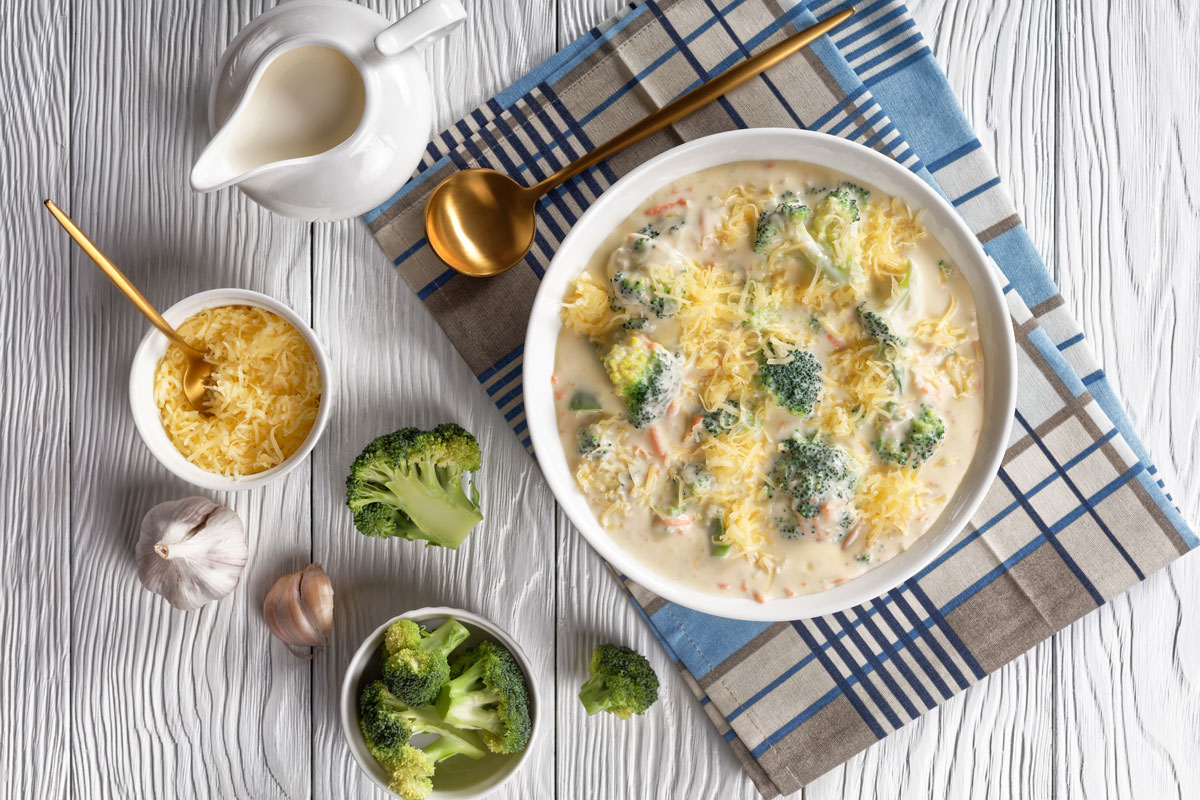Melissa’s Vegetarian Dumplings with Dipping Sauce Recipe, Spotlight on Asian Ingredients, Prepping Rice Noodles, Fewer Ultra-Processed Foods, Greater Weight Loss, and On the Horizon: Walk This Way…To Ease Knee Pain
Members of the Fresh-Pressed Olive Oil Club know that the Pressing Report that accompanies each quarterly shipment includes a recipe section focused on the cuisines of the countries where the olives were harvested and milled. However, extra virgin olive oil has a delicious place in nearly every cuisine, and this Asian dumpling recipe is a perfect example. I talk a lot about the merits of eating whole foods, and a new study on weight loss points to one of its many benefits. I’m also sharing an imminent new therapy for knee arthritis—how a simple tweak to the way you walk can help.
Melissa’s Vegetarian Dumplings with Dipping Sauce
 Melissa’s Vegetarian Dumplings with Dipping Sauce
Melissa’s Vegetarian Dumplings with Dipping SauceMelbourne-based foodie and olive oil authority Melissa Wong shared two of her dumpling recipes with me on my most recent trip to Australia for the Fresh-Pressed Olive Oil Club. The shrimp-and pork-based dumpling recipe is available in the current Pressing Report included with our latest Ozzie olive oils. Here is her meatless version. Tailor the filling to your tastes by adding more veggies like diced shiitake mushrooms, water chestnuts, or jicama. Please click here to join now so you don’t miss my sumptuous trio of Oz oils shipping now.
Ingredients
For the dipping sauce:
- 2 tablespoons sesame seeds
- 1 tablespoon ground Sichuan pepper
- 3 tablespoons extra virgin olive oil
- 1 teaspoon minced garlic
- 1 teaspoon minced ginger
- 1/2 fresh chile, such as jalapeño or serrano, chopped
- 2 sprigs fresh cilantro, chopped
- 1/2 teaspoon sugar
- 3 tablespoons soy sauce
- 3 tablespoons black vinegar
- 2 teaspoons sesame oil
- 2 scallions, trimmed and thinly sliced
For the dumplings:
- 1/2″ piece ginger, peeled and cut into coins
- 2 garlic cloves
- 4 tablespoons extra virgin olive oil, divided use
- 1/2 medium onion, diced small
- 1/2 carrot, diced small
- 1 cup diced red cabbage
- 1/2 teaspoon ground coriander
- 1/2 teaspoon ground cumin
- 1 ounce dried rice noodles
- 1/2 cup diced zucchini
- 2 portobello mushrooms, diced small
- 1 teaspoon cornstarch
- 1 package square or round dumpling wrappers (about 50)
Directions
Step 1
For the dipping sauce, toast the sesame seeds in a dry, hot frying pan until fragrant, about 2 minutes; transfer to a small dish and set aside. In the same pan, dry toast the Sichuan pepper, about 2 minutes. Off the heat, swirl in the olive oil, garlic, ginger, chile, cilantro, and sugar. Whisk in the soy sauce, vinegar, sesame oil, scallions, and the reserved sesame seeds. Pour into a serving bowl and set aside.
Step 2
For the dumpling filling, place the ginger, garlic, and 2 tablespoons olive oil in a small food processor and blitz to a rough paste; set aside.
Step 3
Heat a wok or large frying pan over medium-high heat. When hot, add in 1 tablespoon olive oil and the onions and cook until the onions soften slightly. Add the carrots and cook for 30 seconds. Add in the ginger-garlic paste and cook until fragrant. Transfer the contents of the wok to a large bowl and return the wok to the stovetop.
Step 4
Let the wok heat up again, then add the remaining tablespoon olive oil and the cabbage and cook until the cabbage softens slightly. Turn off the heat and stir in the coriander and cumin. Add to the bowl with the other vegetables, holding back any released liquid from the cabbage (discard it). Allow the vegetables to cool completely.
Step 5
Soak the rice noodles in cold water until softened, about 3 minutes. Drain and roughly chop into 1″ pieces. Add to the cooked vegetables along with the zucchini and mushrooms. Evenly sprinkle on the cornstarch and mix well.
Step 6
Line a rimmed sheet pan with parchment paper and cover with a clean kitchen towel. Place a bowl of water next to your work area. Open the package of wrappers and cover with a damp kitchen towel so that they won’t dry out.
Step 7
Place a generous teaspoon of filling in the center of a wrapper (don’t overfill or the dumplings won’t stay closed). Dip a fingertip in the water bowl and moisten the outer edges of the wrapper, then fold it and press the edges together to seal them. For round wrappers, crimp the edges together to make a crescent shape. For square wrappers, use your fingertip to wet the two bottom corners, then overlap them slightly and press together to form a shape like a bishop’s hat. As you finish each dumpling, place it on the rimmed sheet pan under the towel. There should be enough filling to make about 50 dumplings.
Step 8
Bring a large pot of water to a boil. Drop in 12 to 16 dumplings at a time and cook for 7 minutes (they will float to the surface). Use a Chinese strainer to transfer them to a large bowl; cover with a pot lid to keep them warm. Repeat until all the dumplings have been cooked. Serve with the dipping sauce.
Serves 8 to 10

Healthy Ingredient Spotlight
Asian Ingredients
Fresh ginger, garlic, and scallions are mainstays in Asian cooking, but there are other staples called for in so many recipes, including stir-fries and marinades, that you’ll use them more than you realize once you have them in your pantry. Here are descriptions of the essentials used in the dumpling recipe:
- Black vinegar is an aged vinegar with a rich, pungent yet somewhat sweet flavor.
- Rice noodles and wrappers can be used the same way you’d use pasta and tortillas. Because they’re gluten-free, they’re a great alternative to flour-based products.
- Rice wine, such as Shaoxing or mirin, or rice wine vinegar adds fruity notes along with acidity.
- Sesame oil is available toasted to be used as a finishing oil or added at the end of a recipe, and untoasted, which is milder in taste and lighter in color.
- Sichuan peppercorns, which come whole or ground, are not technically a chile pepper but deliver a slightly citrusy zing to dishes.
- Soy sauce is used instead of salt and can be very powerful—consider reduced-sodium varieties or simply start with just half of what’s called for in traditional recipes.
Other than the peppercorns, store these in the fridge after opening.

Quick Kitchen Nugget
Prepping Rice Noodles

Rice noodles are used in so many Asian dishes, from stir-fries to soups and from pad Thai to Vietnamese summer rolls. What’s more, they can be stored in the pantry and don’t need to be boiled before using. A quick soak in cool water is all that’s necessary—about 10 seconds for a wrapper and 2 to 3 minutes for a bowl of noodles.

For Your Best Health
Fewer Ultra-Processed Foods, Greater Weight Loss
A recent study done at the University College London in the UK is music to a frustrated dieter’s ears: Participants eating minimally processed foods lost twice as much weight as those eating ultra-processed foods, even though both groups’ diets were nutritionally balanced and they could eat freely. The findings revealed that food processing itself—not just the food’s nutrients—plays a significant role in shaping body weight and health outcomes and that cutting down on processed foods could help people sustain a healthy weight long term.
The study, published in Nature Medicine, is the first interventional study comparing ultra-processed food (UPF) and minimally processed food (MPF) diets in real-world conditions, as well as being the longest experimental study of a UPF diet to date. Fifty-five adults were split into two groups. One group started with an eight-week diet of MPF, with meals like overnight oats and homemade spaghetti Bolognese; then, after a four-week period during which they went back to their normal diet, they were switched to a diet of UPF, with meals like breakfast oat bars and premade lasagna. The other group completed the diets in the opposite order. In total, 50 participants completed at least one diet.
The diets provided were nutritionally matched in accordance with the Eatwell Guide, the UK’s official government advice on how to eat a healthy, balanced diet. This included monitoring levels of fat, saturated fat, protein, carbohydrate, salt, and fiber, as well as providing recommended intakes of fruits and vegetables. Participants had plenty of food (i.e., more calories than they needed) delivered to their home and were told to eat as much or as little as they wanted, as they would normally. They were not told to limit their intake.
After eight weeks on each diet, both groups lost weight, likely a result of the improved nutritional profile of what they were eating compared to their normal diet. However, this effect was higher (2.06% reduction) with the MPF diet compared to the UPF diet (1.05% reduction). These changes corresponded to an estimated calorie deficit of 290 calories per day on the MPF diet, compared to 120 calories per day on the UPF diet. (The Eatwell Guide recommends a daily energy intake of 2,000 calories for women and 2,500 for men.)
The greater weight loss experienced on the MPF diet came from reductions in fat mass and total body water, with no change in muscle or fat-free mass, indicating a healthier body composition overall. The findings suggest that, when observing recommended dietary guidelines, choosing MPFs may be more effective for losing weight.
Samuel Dicken, PhD, first author of the study from the UCL Centre for Obesity Research and UCL Department of Behavioural Science & Health, said, “Previous research has linked ultra-processed foods with poor health outcomes. But not all ultra-processed foods are inherently unhealthy based on their nutritional profile. The main aim of this trial was to fill crucial gaps in our knowledge about the role of food processing in the context of existing dietary guidance, and how it affects health outcomes such as weight, blood pressure, and body composition, as well as experiential factors like food cravings.
“The primary outcome of the trial was to assess percentage changes in weight, and on both diets we saw a significant reduction, but the effect was nearly double on the minimally processed diet. Though a 2% reduction may not seem very big, that is only over eight weeks and without people trying to actively reduce their intake. If we scaled these results up over the course of a year, we’d expect to see a 13% weight reduction in men and a 9% reduction in women on the minimally processed diet, but only a 4% weight reduction in men and 5% in women after the ultra-processed diet. Over time this would start to become a big difference.”
Participants completed several questionnaires to assess their food cravings before starting the diets and at weeks four and eight during the diets. On the MPF diet compared to the UPF diet, participants reported a twofold greater improvement in overall craving control, a fourfold greater improvement in craving control for savory food, and an almost twofold greater improvement in resisting whichever food they most craved.
The trial also measured secondary health markers, such as blood pressure and heart rate, as well as blood markers such as liver function, glucose, cholesterol, and inflammation. Across these markers, there were no significant negative impacts of the UPF diet, with either no change or a significant improvement from baseline. Generally, there weren’t significant differences in these markers between the diets, and the researchers caution that longer studies would be needed to investigate these measures properly in relation to the changes in weight and fat mass.
Professor Rachel Batterham, PhD, senior author of the study from the UCL Centre for Obesity Research, said, “Despite being widely promoted, less than 1% of the UK population follows all of the recommendations in the Eatwell Guide, and most people stick to fewer than half. The normal diets of the trial participants tended to be outside national nutritional guidelines and included an above-average proportion of UPF, which may help to explain why switching to a trial diet consisting entirely of UPF but that was nutritionally balanced resulted in neutral or slightly favorable changes to some secondary health markers.
“The best advice to people would be to stick as closely to nutritional guidelines as they can by moderating overall energy intake; limiting intake of salt, sugar, and saturated fat; and prioritizing high-fiber foods such as fruits, vegetables, pulses, and nuts. Choosing less-processed options such as whole foods and cooking from scratch, rather than [eating] ultra-processed, packaged foods or ready meals, is likely to offer additional benefits in terms of body weight, body composition, and overall health.”

Fitness Flash
On the Horizon: Walk This Way…To Ease Knee Pain
A new study led by a University of Utah engineering professor and including scientists from New York University and Stanford University showed that gait retraining can ease pain, slow cartilage damage, and even delay knee surgery.
By making a small adjustment to the angle of their foot while walking, participants in the yearlong randomized control trial experienced pain relief equivalent to medication. Critically, those participants also showed less knee cartilage degradation over that period as compared to a group that received a placebo treatment.

Published in The Lancet Rheumatologyand co-led by Scott Uhlrich, PhD, of Utah’s John and Marcia Price College of Engineering, these findings come from the first placebo-controlled study to demonstrate the effectiveness of a biomechanical intervention for osteoarthritis.
“We’ve known that for people with osteoarthritis, higher loads in their knee accelerate progression, and that changing the foot angle can reduce knee load,” said Dr. Uhlrich, an assistant professor of mechanical engineering. “So, the idea of a biomechanical intervention is not new, but there have not been randomized, placebo-controlled studies to show that they’re effective.”
With support from the National Institutes of Health and other federal agencies, the researchers were specifically looking at patients with mild-to-moderate osteoarthritis in the medial compartment of the knee—on the inside of the leg—which tends to bear more weight than the lateral—outside—compartment. This form of osteoarthritis is the most common, but the ideal foot angle for reducing load in the medial side of the knee differs from person to person, depending on their natural gait and how it changes when they adopt the new walking pattern.
“Previous trials prescribed the same intervention to all individuals, resulting in some individuals not reducing, or even increasing, their joint loading,” Dr. Uhlrich said. “We used a personalized approach to selecting each individual’s new walking pattern, which improved how much individuals could off-load their knee and likely contributed to the positive effect on pain and cartilage that we saw.”
In their first two visits, participants received a baseline MRI and practiced walking on a pressure-sensitive treadmill while motion-capture cameras recorded the mechanics of their gait. This allowed the researchers to determine whether turning the patient’s toe inward or outward would reduce load more, and whether a 5° or 10° adjustment would be ideal.
This personalized analysis also screened out potential participants who could not benefit from the intervention because none of the foot angle changes decreased the load on their knees.
After their initial intake sessions, half of the 68 participants were assigned to a sham treatment group to control for the placebo effect. These participants were prescribed foot angles that were actually identical to their natural gait. Conversely, participants in the intervention group were prescribed the change in foot angle that maximally reduced their knee loading.
Participants from both groups returned to the lab for six weekly training sessions, where they received biofeedback—vibrations from a device worn on the shin—that helped them maintain the prescribed foot angle while walking on the lab’s treadmill. After the six-week training period, participants were encouraged to practice their new gait for at least 20 minutes a day, to the point where it became natural. Periodic check-in visits showed that participants were adhering to their prescribed foot angle within a degree, on average. After a year, all participants self-reported their experience of knee pain and had a second MRI to quantitatively assess the damage to their knee cartilage.
“The reported decrease in pain over the placebo group was somewhere between what you’d expect from an over-the-counter medication, like ibuprofen, and a narcotic, like oxycontin,” Dr. Uhlrich said. “With the MRIs, we also saw slower degradation of a marker of cartilage health in the intervention group, which was quite exciting.”
Participants’ ability to adhere to the intervention over long periods of time is one of its potential advantages. “Especially for people in their 30s, 40s, or 50s, osteoarthritis could mean decades of pain management before they’re recommended for a joint replacement,” Dr. Uhlrich added. “This intervention could help fill that large treatment gap.”
Before gait retraining can be made widely available, future studies of this approach are needed and the gait retraining process will have to be streamlined. The researchers envision that this intervention will eventually be prescribed in a physical therapy clinic and that retraining can happen while people go for a walk around their neighborhood.
“We and others have developed technology that could be used to both personalize and deliver this intervention in a clinical setting by using mobile sensors, like smartphone video and a smart shoe,” Dr. Uhlrich said.
Get More Recipes In Your Inbox!






